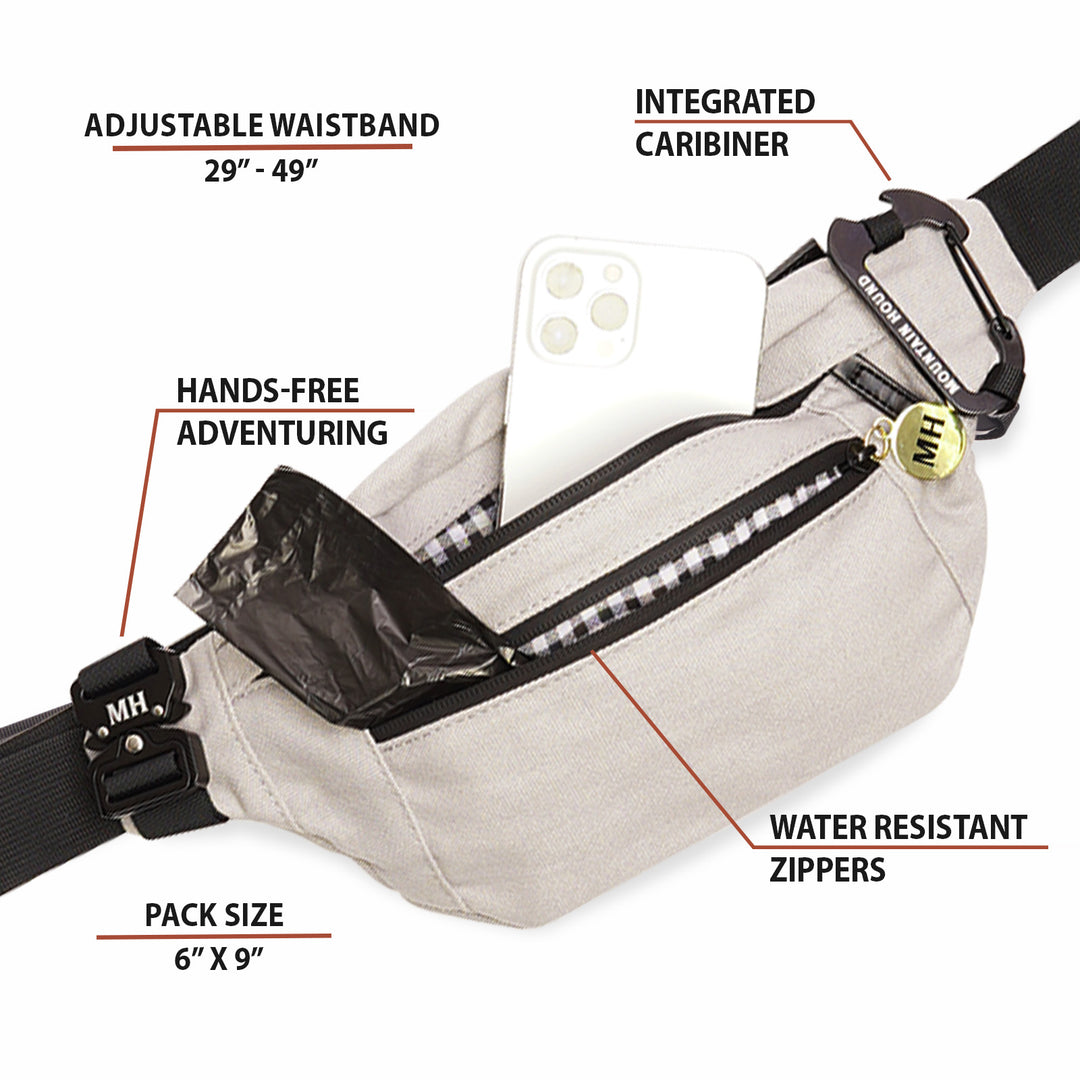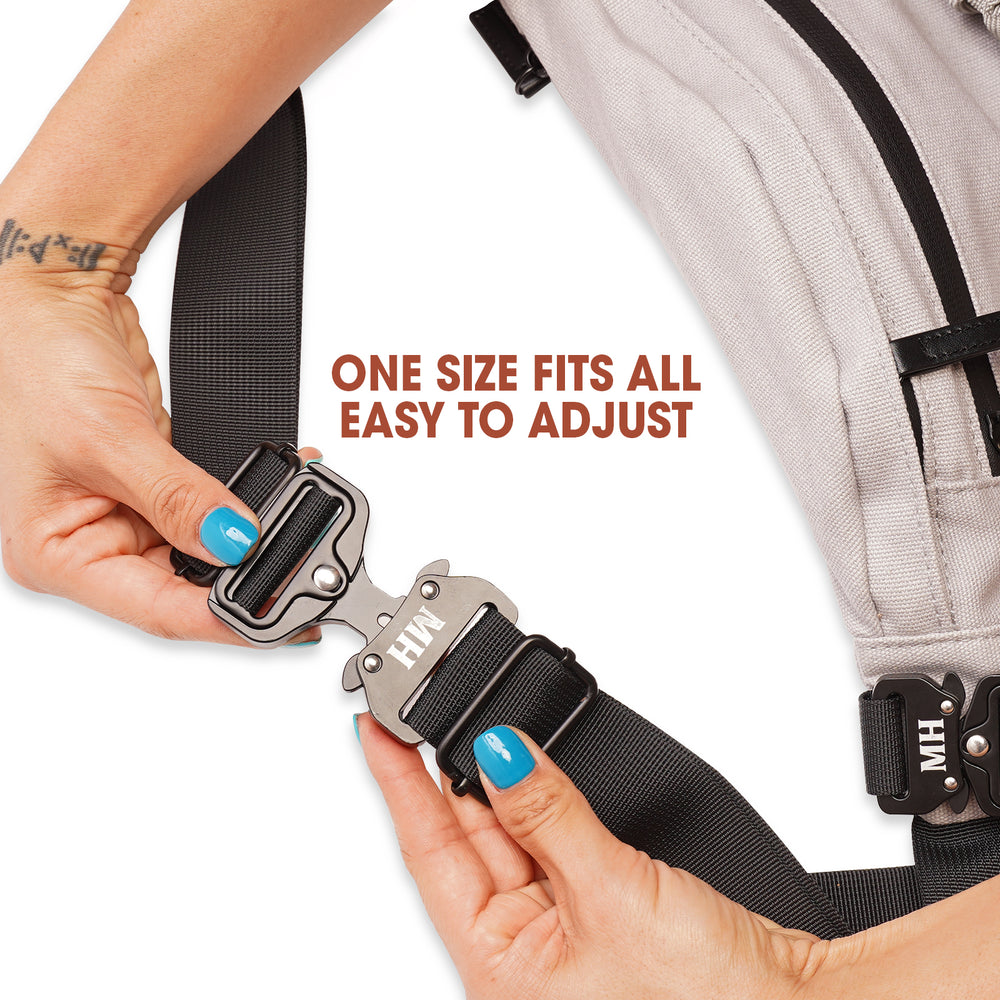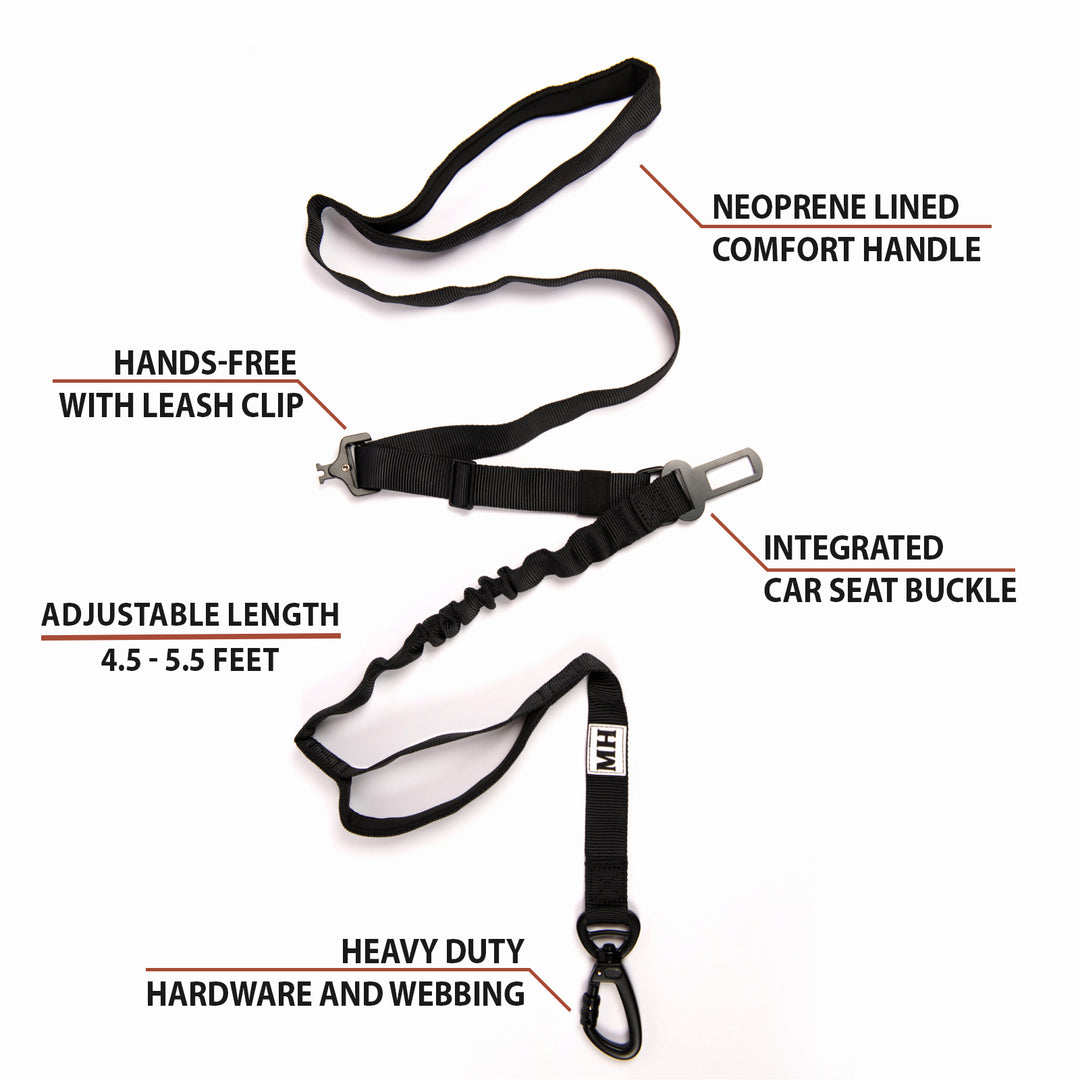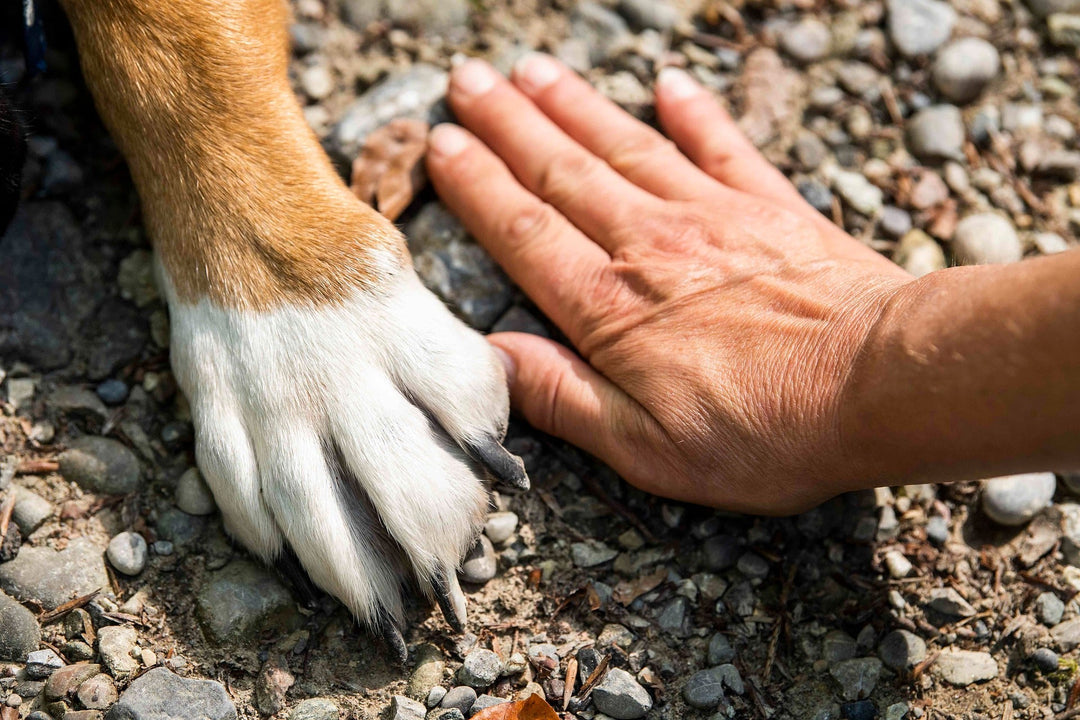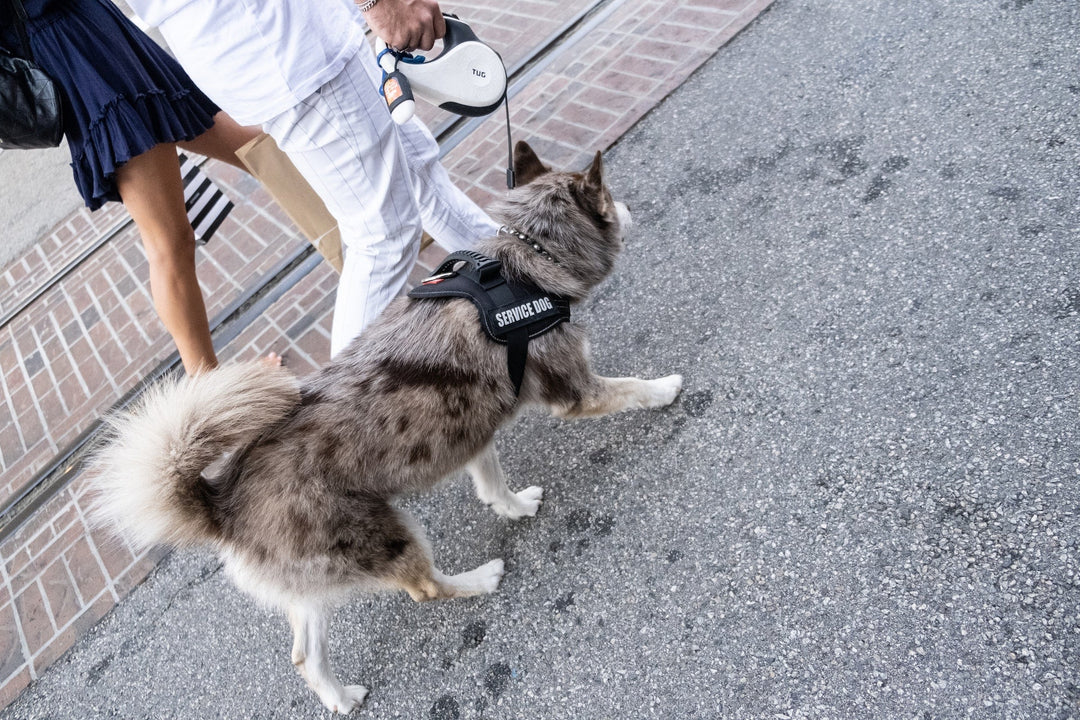Do Leash Laws Apply to Service Dogs?
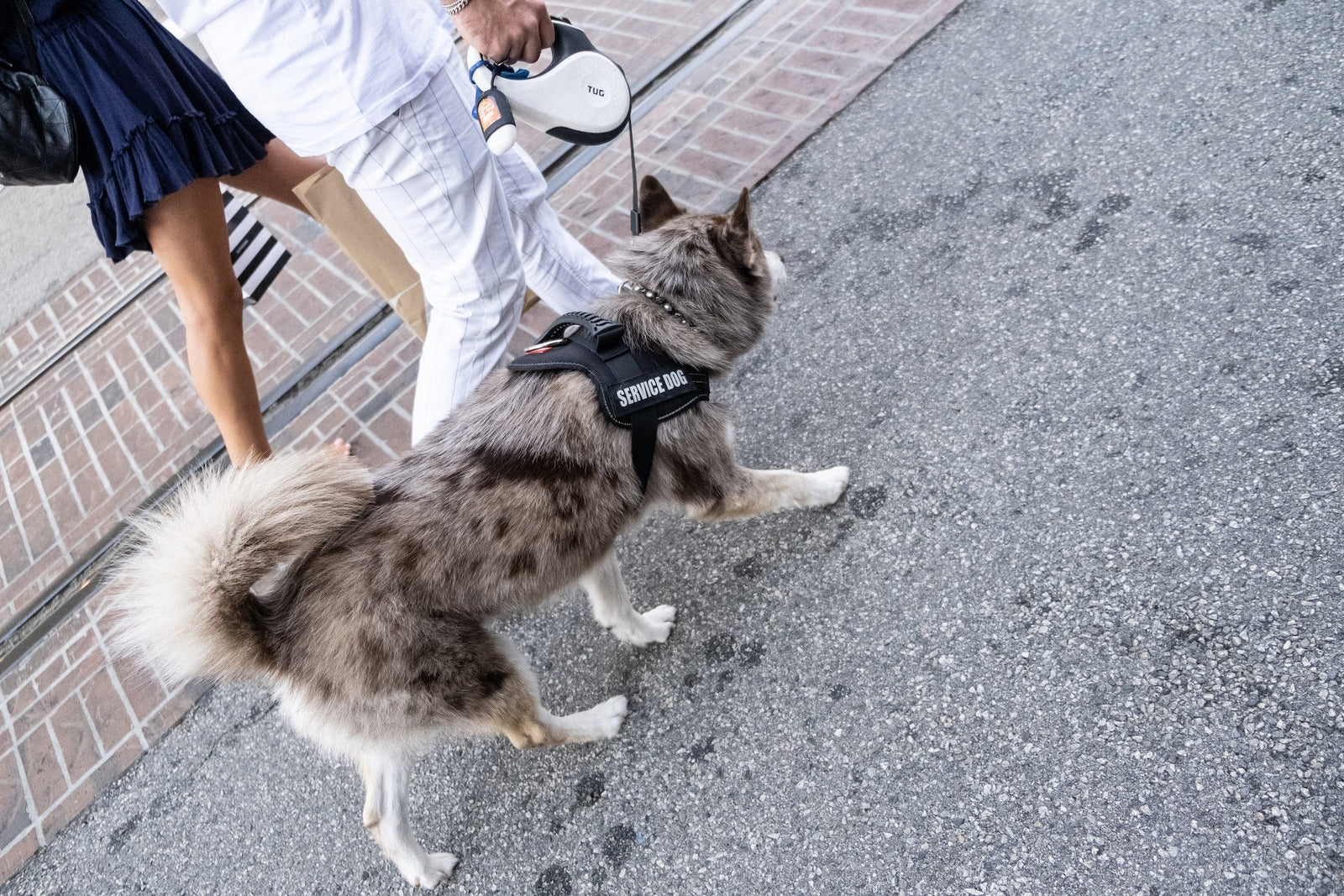
Dogs bring immeasurable joy and assistance to many. Understanding the dynamics of leash laws, especially concerning service dogs, is of paramount importance. Leash laws are in place to regulate the control of dogs in public spaces, ensuring safety and order. However, when it comes to service dogs, a nuanced understanding of these laws is essential to respect the rights and needs of both the service dog and its owner.
In today’s Mountain Hound blog post, we’ll explore leash laws, how they apply to service dogs, and when a dog can be off-leash.
What are Leash Laws?
Leash laws govern when and where dogs must be on a leash and are enacted at local, state, or municipal levels. Leash laws aim to maintain public safety and prevent any potential hazards or nuisances associated with free-roaming dogs. The specifics of leash laws can vary, but in general, they require dog owners to keep their pets restrained by a leash when in public areas such as parks, streets, or other communal spaces.
Leash laws serve various purposes, including:
- Safety: Leashes ensure that dogs remain under control, reducing the risk of accidents, conflicts with other dogs, or unexpected behavior.
- Public Order: It’s easy to manage a dog on a leash and ensure they don’t create disturbances or cause fear in other people.
- Wildlife Protection: Leashes can help prevent dogs from chasing or harming wildlife, preserving the local ecosystem.
Do Leash Laws Apply to Service Dogs?
Yes. Leash laws apply to service dogs in most public spaces. Service dogs are exceptional companions trained to perform specific tasks or assist individuals with disabilities. According to the Americans with Disabilities Act (ADA), service dogs must be harnessed, leashed, or tethered unless doing so interferes with the dog’s ability to perform its tasks.
Like any other dog, service dogs should be on a leash in areas where leash laws are in effect. However, when a leash would impede the service dog’s ability to assist its owner, exceptions can be made.
When Can a Dog Be Off-Leash?
The circumstances under which a dog can be off-leash will depend on the local leash laws and the specific situation. Some common scenarios where dogs may be off-leash include:
- Designated Off-Leash Areas – Many communities provide designated spaces such as dog parks or beaches where dogs can roam without a leash. These areas are typically enclosed and provide a safe environment for off-leash play and exercise.
- Private Property – On private property, with the owner’s consent and where local laws permit, a dog may be off-leash.
- Training Grounds – Dogs undergoing obedience training in designated training areas may be off-leash under the supervision of a responsible trainer.
- Remote and Rural Areas – In less populated or remote areas where leash laws may not be as strictly enforced or are non-existent, dogs may have the freedom to be off-leash, but owners must always prioritize safety and control.
Leash Law Exceptions for Service Dogs
A service dog is a dog that is individually trained to perform tasks for a person with a disability. The law provides individuals with disabilities the right to be accompanied by their service dogs in all public places where regular members of the public are allowed to go.
Although leash laws require all dogs to be on a leash when in public areas, the ADA notes that service dogs may need to be off-leash to effectively perform their trained tasks, especially those related to mobility assistance. For example, a person with mobility challenges may need a service dog to help them maintain balance or provide support during movement.
In such cases, requiring the dog to be leashed at all times would hinder the dog’s ability to assist the handler effectively. However, individuals are still required to maintain control through other means like voice, signal, or other adequate controls.
Final Thoughts
While leash laws generally apply to service dogs, the ADA provides exceptions that allow service dogs to be off-leash when necessary for the performance of their tasks. The primary objective is to balance the requirements of leash laws with the needs of people with disabilities who rely on the assistance of their service dogs. Even when a service dog is off-leash, the handler is still responsible for ensuring that the dog is under control, behaves appropriately in public spaces, and doesn’t pose a threat to others.
Photo by Brian Wangenheim on Unsplash


